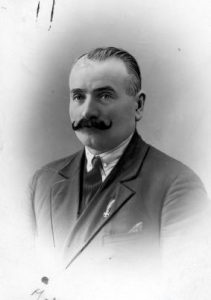
On 31 October 1906, Marian Malinowski set off, as he himself put it, “on a journey into the unknown at government expense.” As it turned out a few months later, the destination of this shackled wandering – orchestrated for him by tsarist officials – was the settlement of Pinega near Arkhangelsk. At the time, Malinowski was a 30 years old, an experienced independence activist, and a member of the Radom district authorities of the Polish Socialist Party.
In his military operations against the tsarist authorities, he always displayed – as he was described years later – “a noble cavalier’s fantasy”. He did not lose it even in exile, from where he escaped after merely… 8 days! Through Arkhangelsk, Yaroslavl, Moscow and Kyiv, he reached Warsaw. Sent by the Polish Socialist Party to Zagłębie Dąbrowskie, he resumed his independence activities. As early as in November 1907, he fell into the hands of Russians again. This time, he spent several years in penal servitude prisons before finally being exiled to the town of Bayandai near Irkutsk. It was autumn 1913. After a few months, in the spring of 1914, he escaped from exile a second time. In the Second Republic, Marian Malinowski was briefly a minister and then for many years a member of parliament.
He died on 7 March 1948 in Radom. Such is the story of this extraordinary prisoner in chains, whose photograph draws the attention of many visitors to the permanent exhibition of the Sybir Memorial Museum.
Photo: Marian Malinowski, source: National Digital Archives



